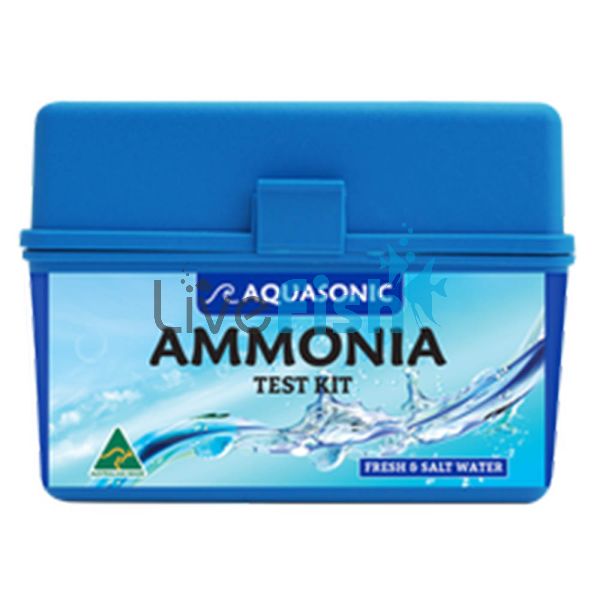Aquasonic Ammonia Test Kit
AMMONIA TEST KIT
In all aquarium systems, biological activity develops in your filter, and on the surface of gravels and decorations, etc. These bacteria are essential to achieve a balance in your aquarium and different types of bacteria need to be present in the right proportions to break down waste and deal with ammonia, nitrite, and nitrate, which can all be harmful to your fish. Every time you change or add something to your tank, or you clean it, you potentially upset the balance because you are effectively removing some of these bacteria.
AMMONIA TEST KIT
AMMONIA TEST KIT
In all aquarium systems, biological activity develops in your filter, and on the surface of gravels and decorations, etc. These bacteria are essential to achieve a balance in your aquarium and different types of bacteria need to be present in the right proportions to break down waste and deal with ammonia, nitrite, and nitrate, which can all be harmful to your fish. Every time you change or add something to your tank, or you clean it, you potentially upset the balance because you are effectively removing some of these bacteria.
DERIVATION OF AMMONIA
Ammonia occurs in water from two common origins:
- The decomposition of fish waste, decaying food, and dead fish.
- Many water supplies now contain chloramines. The addition of some water purifiers to tap water containing chloramines releases chlorine and leaves ammonia.
TOXICITY AND THE EFFECTS OF AMMONIA
Ammonia concentrations of more than 0.1ppm can affect fish and marine fish are more sensitive than freshwater fish. Levels of less than 0.1ppm as a rule, are harmless. However, when levels occur at 1ppm or greater, immediate action should be taken to alleviate the problem.
DEALING WITH AMMONIA
Ammonia that occurs as a result of fish waste is best dealt with on a constant basis by biological filtration, which, once established in an aquarium, will convert the ammonia to nitrate. Remove any uneaten food or dead fish before decomposition to minimize the source of ammonia. Ammonia may be neutralized in aquaria or shipment water by using Aquasonic AMMOGONE. Chloramines in tap water may be neutralized by Aquasonic AMMO-GONE or Aquasonic POWER WATER CONDITIONER.
In situations where there is a high number of fish and little or no filtration, e.g., fish-holding ponds or shipment bags, some relief can be obtained with pH control. In such situations for freshwater, keep the pH below 7.0, and in saltwater 7.3.
WATER QUALITY
Ammonia creates stress and can cause fish deaths by lowering fish resistance to disease. Diligent testing of your water for ammonia is the best defense for the health of your fish.
TO BREAK THE AMMONIA->NITRITE->NITRATE CYCLE:
- Perform a water change.
- Remove anything that can cause ammonia to form (e.g., dead organic matter or excess fish waste) from amongst the substrate (e.g., gravel cleaner).
-
Use Aquasonic AMMO-GONE to neutralize the ammonia in the system.
The manual addition of live strains of nitrifying bacteria can also aid in kick-starting the biological activity in the filter system.
DIRECTION FOR USE:
To determine AMMONIA levels in Fresh Water or Salt Water:
- Rinse the clean test tube and cap provided several times in the water to be tested.
- Fill the test tube to the 5ml mark with the sample to be tested.
-
Add 1 level scoop of Reagent A and 4 drops of Reagent B.
- Swirl to dissolve the powder. This takes little more than 1 minute.
- . Wait 10 minutes to compare the results with the colour chart. Place the test tube on the white background of the colour chart, and view it vertically down the tube. The colour in the test tube is best viewed with natural light behind you.
NOTE: Ammonia tests in saltwater will cause some cloudiness in the test tube due to salt precipitation, but this will not affect the test results.
*This colour chart provides a basic guide only. Colours may vary according to the various water conditions.
| Scientific Name | Test Kit |
|---|




